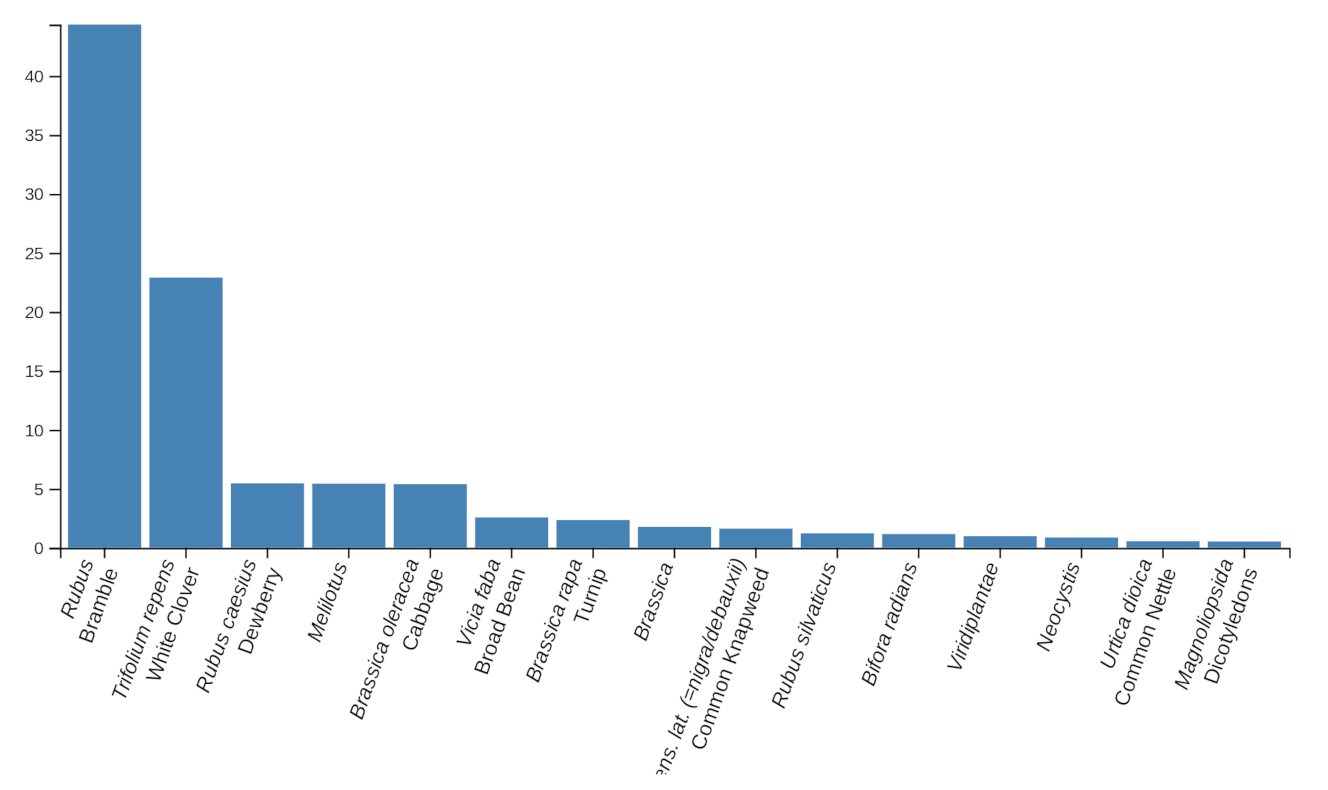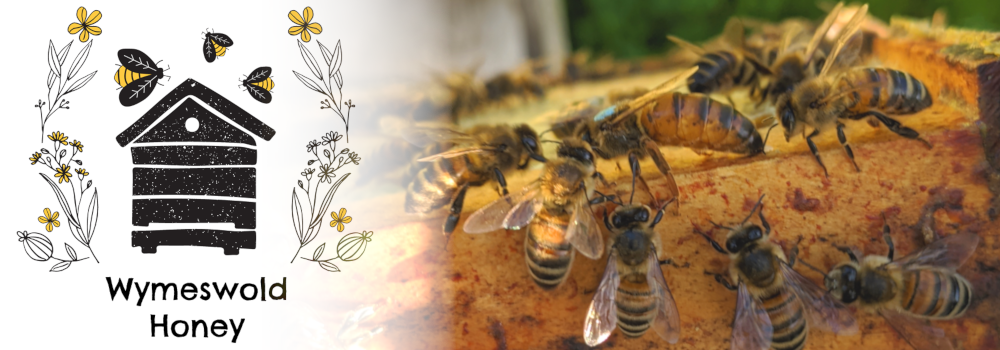Well, we pretty-much knew that 2020 was probably going to be bobbins in comparison to 2019. Then, we had beautiful summer honey, in abundance, with the bees bringing in pollen from 56 species, including lots and lots and lots of native wildflower.
The hot spring, during 'Lockdown #1', gave us much hope for Summer '20; indeed we extracted a huge amount of wonderful dandelion honey towards the end of May. However, the mood of the weather - along with the mood of the nation - took a dip in early Summer, and July (when the bees really get going in anger) turned into a bit of a washout. It was noticeable how little foraging was occurring, and that the glorious diversity of meadow flowers was not on a par with the previous year. The cooler conditions also led to the bees not drying their honey to the same extent.
Anyhow, the verdict's finally in, and our 2020 crop appears to have contained only 24 identifiable varieties of pollen. In fact, if you group the brambly species (e.g. Bramble, Dewberry and Rubus silvaticus), the extent to which these predominate is striking. Clovers of varying types, along with brassicas, make up the majority of the rest ...
... and not that we are complaining. It was still great honey, and it was, above all, still a true reflection of what was going on in nature at that time - it was just glaringly different; for a sample taken at an identical time of year. That is nature in flux, for sure.
What is also interesting are the "new entrants" to the chart! Not only is there evidence of garden sustenance (e.g. Hairy ceanothus), but also of the bees bringing in grass pollen (Yorkshire-fog); though they won't have been finding any nectar on the latter. Most fascinating, if that's your thing ![]() .
.
As we write, in late Spring '21, my own hope is that the converse is true. April and May have been amongst the bleakest in living memory, but the moisture in the ground, along with the fact that the cooler temperatures have set much of the flora back at least a couple of weeks, gives me great hope that, come June and July, we're going to enter nirvana. We need to smash 56 this year!!! The bees themselves are in surprisingly fit form, so let's see. In the meantime, the results from 2020 were:
Top 15 most abundant taxa in the sample

Complete list of taxa in the sample:
| Species scientific name | Common name |
|---|---|
| Rubus | Bramble |
| Trifolium repens | White Clover |
| Rubus caesius | Dewberry |
| Melilotus | |
| Brassica oleracea | Cabbage |
| Vicia faba | Broad Bean |
| Brassica rapa | Turnip |
| Brassica | |
| Centaurea nigra sens. lat. (=nigra/debauxii) | Common Knapweed |
| Rubus silvaticus | |
| Bifora radians | |
| Viridiplantae | |
| Neocystis | |
| Urtica dioica | Common Nettle |
| Magnoliopsida | Dicotyledons |
| Centaurea | Knapweed |
| Holcus lanatus | Yorkshire-fog |
| Brassica napus | Rape |
| Prunus | Cherry |
| Ceanothus oliganthus | Hairy ceanothus |
| Triticum turgidum | Rivet Wheat |
| Brassica juncea | Chinese Mustard |
| Salix triandra | Almond Willow |
| Hypochaeris radicata | Cat's-ear |

